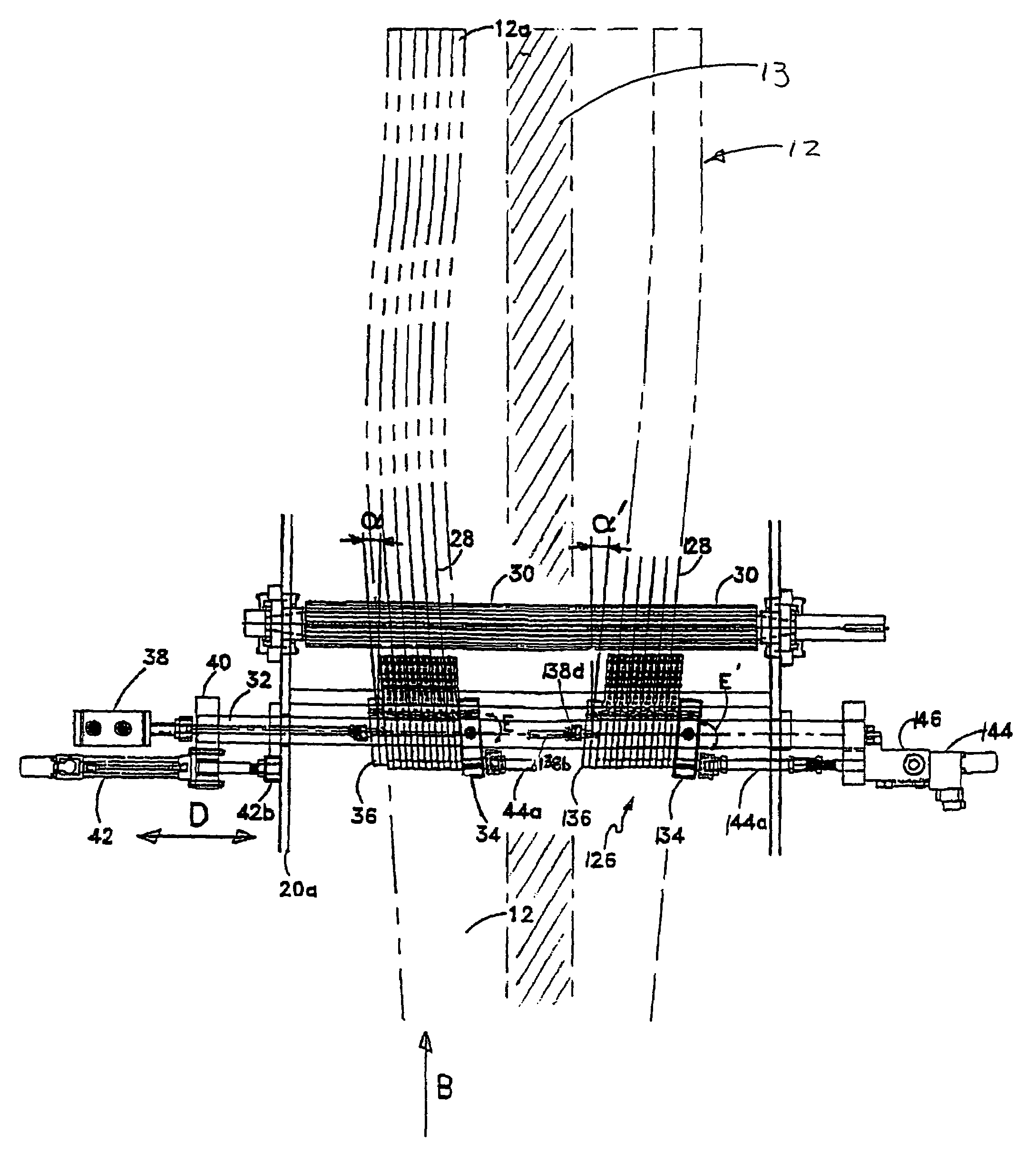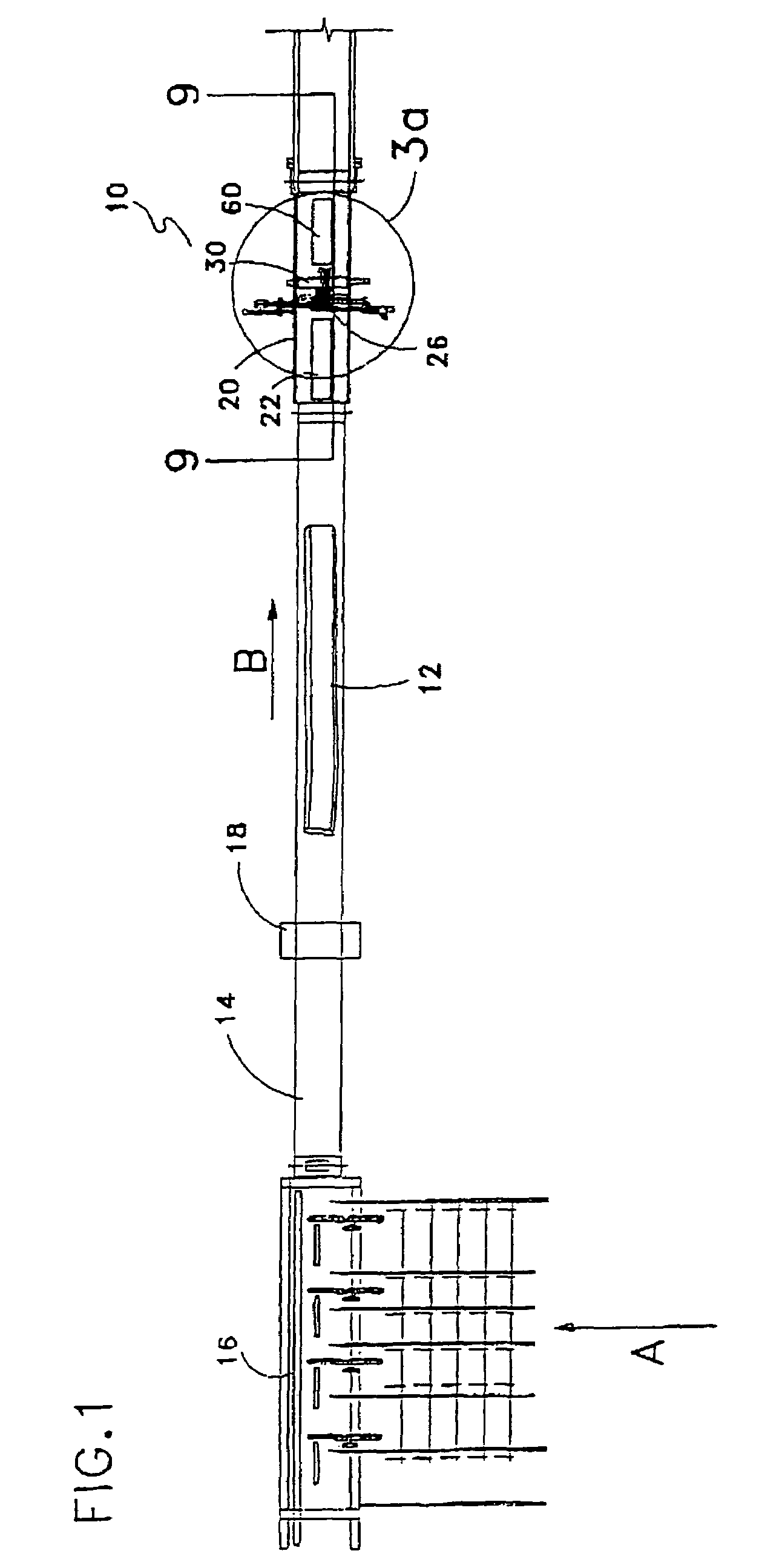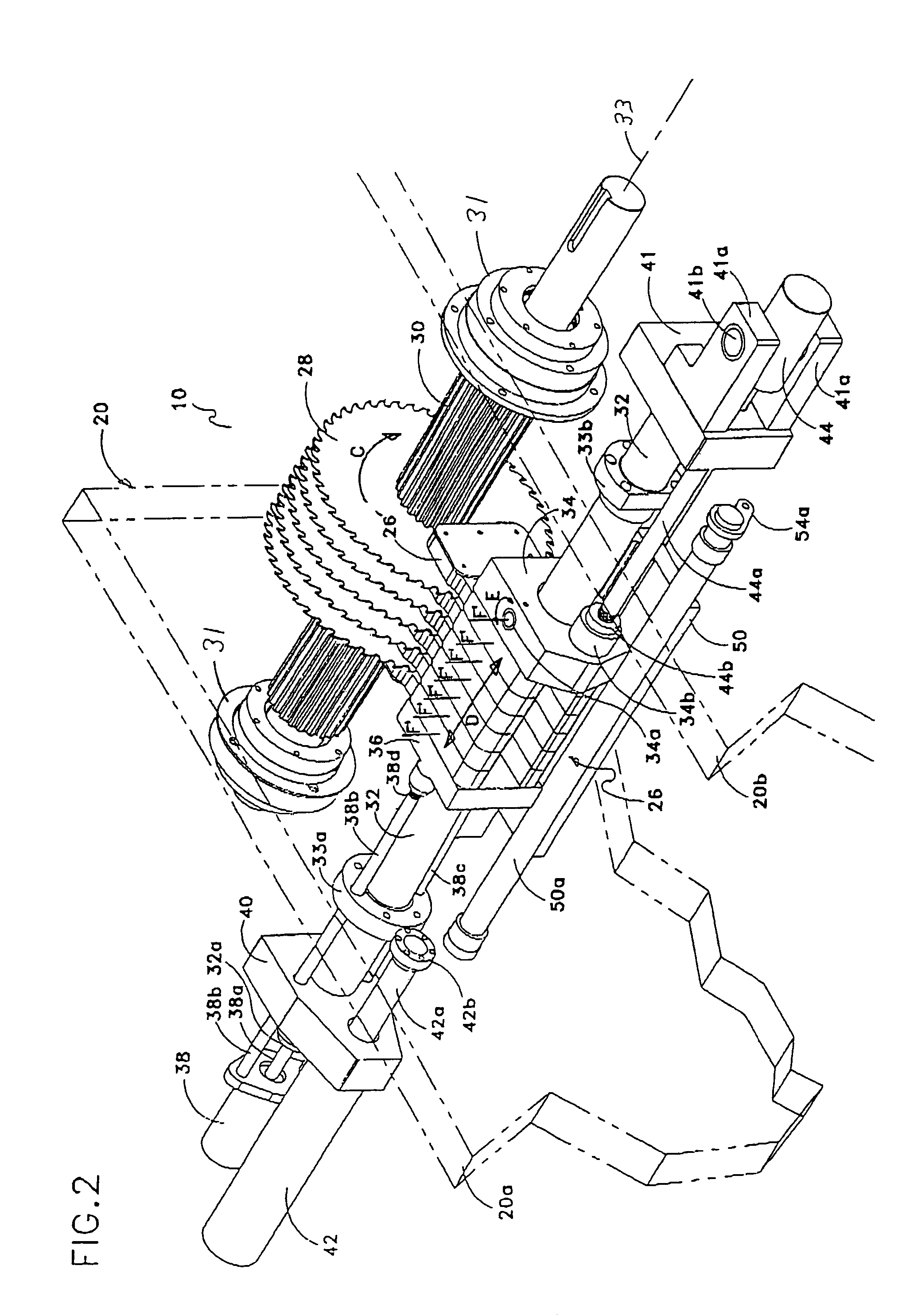Active sawguide assembly and method
a sawguide and active technology, applied in the field of active sawguide package system, can solve the problems of poor strength characteristics of heartwood, unsuitability for structural grade timber, and uneven surface, and achieve the effect of most recovery of structural grade wood
- Summary
- Abstract
- Description
- Claims
- Application Information
AI Technical Summary
Benefits of technology
Problems solved by technology
Method used
Image
Examples
Embodiment Construction
[0040]Referring to the drawing figures wherein similar characters of reference represent corresponding parts in each view, the active sawguide assembly of the present invention is generally indicated by the reference numeral 10.
[0041]A workpiece 12 is fed transversely from the mill in direction A and is directed onto a lineal transfer 14 and positioned against a fixed fence 16 or other positioning means, for roughly or approximately centering the workpiece on the lineal transfer. Once workpiece 12 is roughly centered on lineal transfer 14 it is translated lineally in direction B through a lineal scanner 18 towards sawbox 20. Scanner 18 scans workpiece 12. Once through the scanner workpiece 12 is translated onto an infeed sharpchain transfer 22 positioned within the infeed area of sawbox 20. As best seen in FIG. 9 a plurality of overhead driven press rolls 24 are located above infeed sharp chain transfer 22. Press rolls 24 press down on workpiece 12 to feed workpiece 12 straight into...
PUM
| Property | Measurement | Unit |
|---|---|---|
| volume | aaaaa | aaaaa |
| strength | aaaaa | aaaaa |
| length | aaaaa | aaaaa |
Abstract
Description
Claims
Application Information
 Login to View More
Login to View More - R&D
- Intellectual Property
- Life Sciences
- Materials
- Tech Scout
- Unparalleled Data Quality
- Higher Quality Content
- 60% Fewer Hallucinations
Browse by: Latest US Patents, China's latest patents, Technical Efficacy Thesaurus, Application Domain, Technology Topic, Popular Technical Reports.
© 2025 PatSnap. All rights reserved.Legal|Privacy policy|Modern Slavery Act Transparency Statement|Sitemap|About US| Contact US: help@patsnap.com



